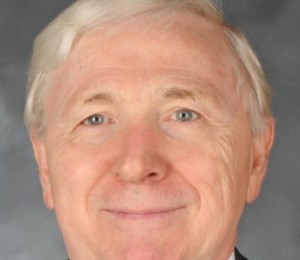Our faculty members and researchers have vast expertise in many advanced aeras, as can be seen in the list below.
For the complete list of our experts, see the Departmental directory.
Axes
Delfour, Michel
Professeur émérite,Professeur associé
- Analysis, control and object identification
- Applied mathematics
- Classical and functional analysis
- Control and stabilization of space structures
- Endoprosthesis design and control
- Image processing
- ODE and PDE
- Optimization
- Optimization and system control
- Radio interference for terrestrial transport
Michel Delfour is a Guggenheim, Killam, and SIAM Fellow and was awarded the Urgel-Archambault Prize for Physics, Mathematics, and Engineering from ACFAS. His research interests are: optimization and design of shapes and geometries, analysis and control of ordinary, delay, and partial differential systems, control and stabilization of large space structures, numerical methods in differential equations and optimization. His recent interests include the frequency assignment methods to land mobiles, the modelling and control of thin and asymptotic shells, the design of endoprotheses in interventional cardiology, and the design of the dynamics of drug release. He is the author of 13 books and more than 175 papers.
He has been president of the Canadian Mathematical Society and has served on numerous Canadian granting and advisory committees, as well as on panels, boards, and executive committees of international organizations. He has been a professional engineer (Ordre des Ingénieurs du Québec) since 1966 and has been involved in numerous consulting activities for Canadian organizations.
Gauthier, Paul M
Professeur associé
My research has been in complex analysis and potential theory - mostly approximation by holomorphic or harmonic functions. In recent years, I have been trying to approach the Riemann Hypothesis, using methods of complex approximation rather than number theory.
For all my publications, see mathscinet
NOUTCHEGUEME, Alain Didier
Chargé de cours
I work in a field of mathematics called spectral geometry. This is a field right at the intersection of analysis and geometry.
The problems of spectral geometry are motivated by the study of everyday phenomena, such as the propagation of sound and heat, the oscillations of fluids, as well as quantum effects. Indeed, physicists manage to make nature speak in mathematical language to use the power of this formalism and deduce properties that could then be applied; But this is possible provided that you have a sufficiently developed mathematical theory.
The main objective of spectral geometry is to understand the relationship between the shape of an object (its geometry) and the physical phenomena that take place in it (spectral properties). This is why the results of spectral geometry are directly applicable in several important situations: notably in geophysics and medical imaging, as well as in image processing in computer science. In addition, the advantage of working with abstract concepts is that they will be able to be reincarnated in new concepts: We are not immune to new applications in the future.
The spectral geometry is too large to be studied in its entirety, so it pursues several sub-objectives. One of them to which I dedicate my research work is called shape optimization.
In the same way that the biologist needs the microscope to observe microbes, to achieve his objectives, the spectral geometer who does shape optimization needs to develop tools including so-called isoperimetric inequalities. It is a rapidly developing field, connected to several mathematical topics such as graph theory or homogenization.
In my research, I try to characterize geometries that will maximize different types of spectral problems such as the eigenvalues of the p-Laplacian, or eigenvalues of scattering problems. The latter are observed during the flow of a substance through a medium or membrane with an average inlet/outlet velocity proportional to the flow. In the case of symmetrical domains, its geometries are immersed in piecewise smooth minimal surfaces.
The overall goal is to classify maximal geometries in different situations, which will substantially increase our knowledge between harmonic transformation theory and spectral geometry.
